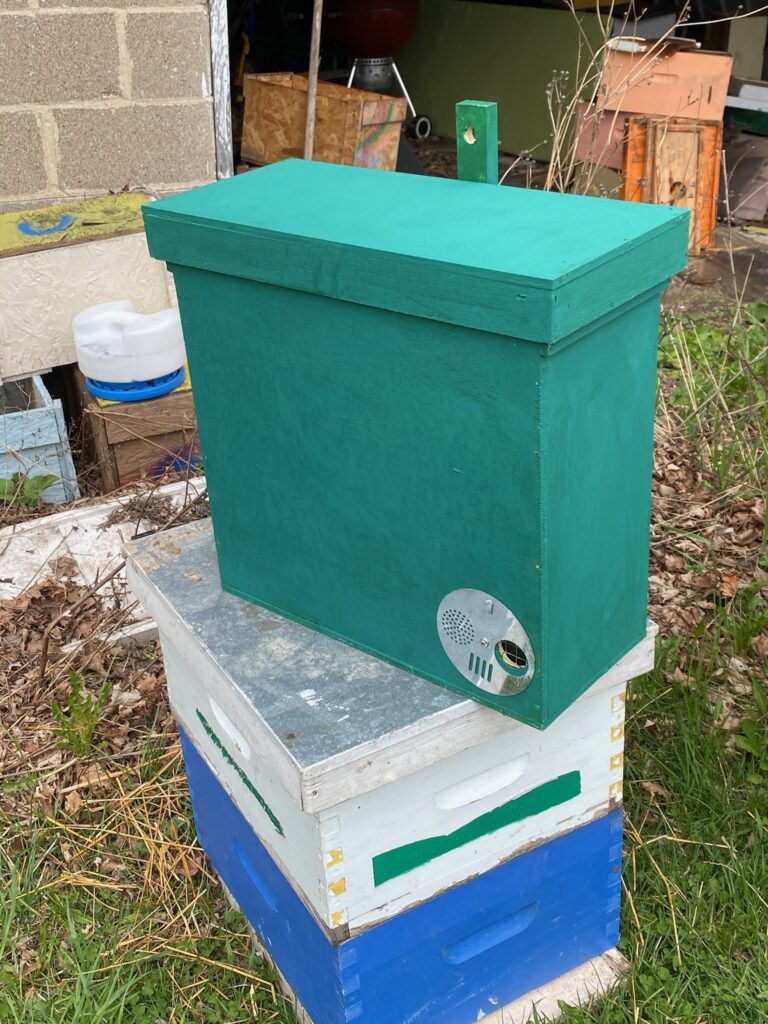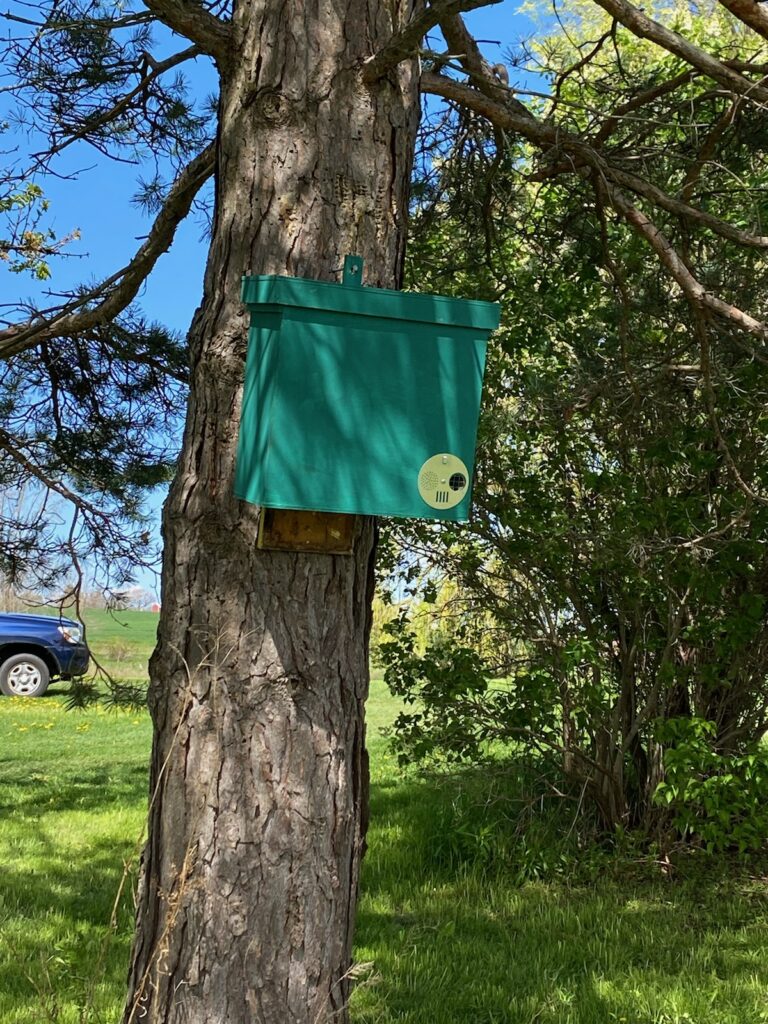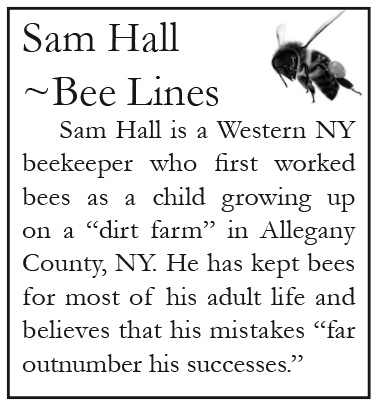Bee Lines
- SAM HALL –
Springtime Swarms and Splits

my swarm trap).
In spite of the lower temperatures varying several degrees below our norm, my bees have largely done their normal thing. They have been raising a lot of new brood. Nature has also been cooperating in furnishing them with an overabundance of nectar bearing blossoms. The dandelions are still in bloom and there is a giant field of Rocket mustard nearby they haven’t hardly worked at all not to mention all of the flowering trees.
Typically swarming season is from about May 15 through June 15, unfortunately this has never been adequately explained to the bees. A friend took a swarm out of some bushes on April 26th in Stanley. He believes they came from a swarm that has been living in a nearby tree. There was also a swarm in the City of Canandaigua a few days later. That was likely a swarm from the beekeepers own yard where he has 6 colonies. The upshot of this is that in spite of the cold temperatures swarming is underway.
With this in mind on May 1, I made a split from my colony #15 which is teeming with a large population. I took 3 frames of sealed brood (actually more like 2 ½) with the attached nurse bees and put them into an 8 frame deep super. They’re lucky as I had enough frames of drawn comb that I was able to give them that advantage in getting started.
The hope is that by taking away sealed brood and the new bees it represents that the colony will not swarm with lesser bees.
In anticipation of the swarming season I had gotten 6 Saskatraz queens on April 28th and had banked them in the top of a very strong colony where I was confident they would have good care until I needed them. Banking is where you place a caged queen in the top super of a strong hive with cork stoppers in place at each end of the cage so the bees (supposedly) can’t get her out. They will feed her and take care of her even though they have their working queen below.
I used the term “supposedly” above because many years ago I banked a marked New World Carniolan queen and a few days later went to retrieve her and the cage was empty. The bees had chewed out the cork and released her. My only explanation which may be incorrect is that they liked her better than their existing queen and decided to take action. Fortunately, she was marked so I could make the real identification. The former queen was unmarked. The marked queen was down in the hive laying and the former I could not find. One thing to bear in mind is that when a queen is banked for a long period of time such as a month or more it may take longer for her to start laying after she has been introduced. She will however eventually lay.
On the same day that I made up the split, I put in it a Saskatraz queen suspending her cage between two of the frames of sealed brood. I also took out the cork on the candy end of the queen cage so the bees could start the process of releasing her. It takes them about 3 days to do this which allows all of the bees to obtain and carry her personal pheromones throughout the hive. If she were released immediately they would probably kill her as they do not recognize her pheronomes and still may have pheronomes from their old queen.
I also put on a pollen patty and a top feeder with syrup so they would have plenty of nourishment to get them started on being a full fledged separate colony. The syrup I made up and this time of year is 50:50 water and cane sugar. On May 7th I checked them and they had released the queen and she was down on the frames. I will check again in a week to see if she is laying.

Images courtesy of Sam Hall

This year I’m using a swarm trap that I bought. In fact I liked the looks of it so much I bought three of them. Two I have placed within the City of Canandaigua and one in my bee yard. In addition I bought a Swarm Commander patty to go in each. The Swarm Commander has been shown to pull a swarm out of the sky directly to it’s location. I have never used them before. Not sure of what is in it but obviously it is a very strong type of artificial pheromone.
Hopefully, I have been able to convey to you some of the excitement that I have at this time of year as I anticipate a new beekeeping season and maybe you can share in that excitement.
Bee of Good Will, Bee of Good Cheer and always Bee Kind.
